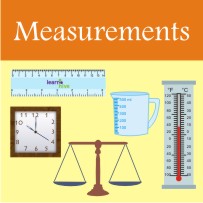 An NPR report this morning addressed the new rotary-action mechanical heart. Instead of pulsing, it pumps like a conventional pump. (KUHF News Article) As interesting as this mechanical marvel is, an obscure quote discussing the process of measurement deserves some recognition.
An NPR report this morning addressed the new rotary-action mechanical heart. Instead of pulsing, it pumps like a conventional pump. (KUHF News Article) As interesting as this mechanical marvel is, an obscure quote discussing the process of measurement deserves some recognition.
Dr. Billy Cohn at the Texas Heart Institute says "If you listened to [the cow's] chest with a stethoscope, you wouldn't hear a heartbeat. If you examined her arteries, there's no pulse. If you hooked her up to an EKG, she'd be flat-lined. By every metric we have to analyze patients, she's not living. But here you can see she's a vigorous, happy, playful calf licking my hand."
This quote underscores a fundamental truth: the process of measurement and the measuring device itself are not the events or processes being measured; they are intrusive and can influence the outcome of the measurement. In fact, any measurement will inevitably impact, in some manner, the activity or event under scrutiny. For instance, when electronic voltage is measured, it necessitates drawing a small stream of electrons, representing measurable power. This stream can and does affect the electronic components being measured. Similarly, in healthcare, the use of blood pressure cuffs alters blood flow and consequently affects the blood pressure reading. In fact, users of blood pressure cuffs are cautioned to stop trying after two failed attempts, as the results become skewed.
In general, measurements are conducted in real-time and post real-time. For instance, measuring electrical voltage occurs in real-time, whereas determining the speed of a vehicle typically happens post-factum by measuring either the distance traveled over a specific interval or counting related events (like magnetic actuator readings from a rotating wheel). Similarly, while blood pressure may be an instantaneous measurement, blood pulse rate is the count of pulses detected over a specific time period (e.g., 15 seconds) or the time between pulses (a reciprocal measurement).
In the real world, most physical measurements (voltage, blood pressure, vehicle speed, etc.) undergo filtering and processing to eliminate random events or mis-measurements, ensuring the resulting data is more reliable. For instance, in the case of heart rate measurements:
- Removing Outliers: Events that do not cluster together, typically the 'top 5%' and 'bottom 5%' of events, are removed as extraneous outliers.
- Filtering Results: More advanced techniques than simple averages are used to refine the data.
- Gap-Filling: Missing or unrecorded events are interpolated to account for patient movements or other factors.
- Spurious Removal: Unexpected beats or anomalies are disregarded.
- Sample Set Size: Increasing the size of the sample set helps enhance accuracy.
Additionally, adjustments must be made to account for the impact of the measurement action or the environment. Engineers may need to apply mathematical corrections to compensate for these influences. Consider the example of a youth swim meet held in pools of varying lengths (e.g., 25 yards vs. 25 meters). Although this doesn't affect the outcome of individual races, it does impact coaches' tracking of contestants' improvement and the league's records.
So, while the NPR article may suggest that the cow is clinically dead while grazing, and both observations may be accurate, the crux of the matter lies in the intricacies of measurement. This once again highlights how the validity and reliability of scientific principles and techniques can be challenged when we grapple with the complexities of measurement processes in the technologist's world.